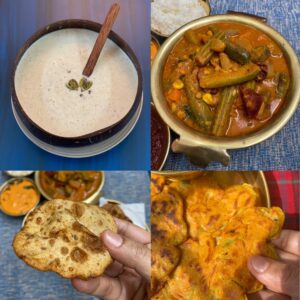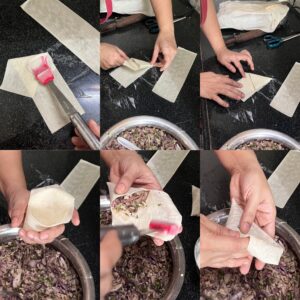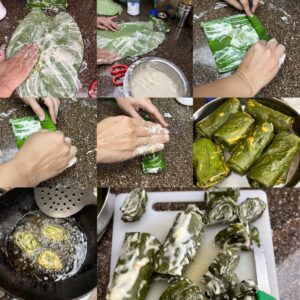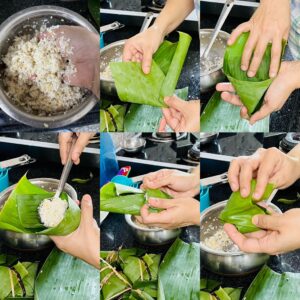Journey to 28 states
The journey of this book has been remarkable — it has been challenging but most importantly rewarding and enjoyable. It all started in the year 2021, when I went to Thiruvananthapuram to spend time with my husband who was posted there after serving his tenure in Kolkata. Yugantar, Deekshant (my sons) and I had gone there for a month — which turned into almost a year. The world was in the midst of the second and third waves of Covid. All of us were homebound and we as a family envisioned this book wherein there would be recipes from across India. There was/is a growing enthusiasm for Indian vegetarian food both among Indians and also among the people of other countries. Veganism in gaining popularity in the world. I started testing/making Vegan recipes 4-5 years ago—to understand the concept. After a couple of months, there was an understanding that the concept of Indian vegetarianism is healthy, practical and also sustainable. There has always been an emphasis on dairy products in the absence of meat.
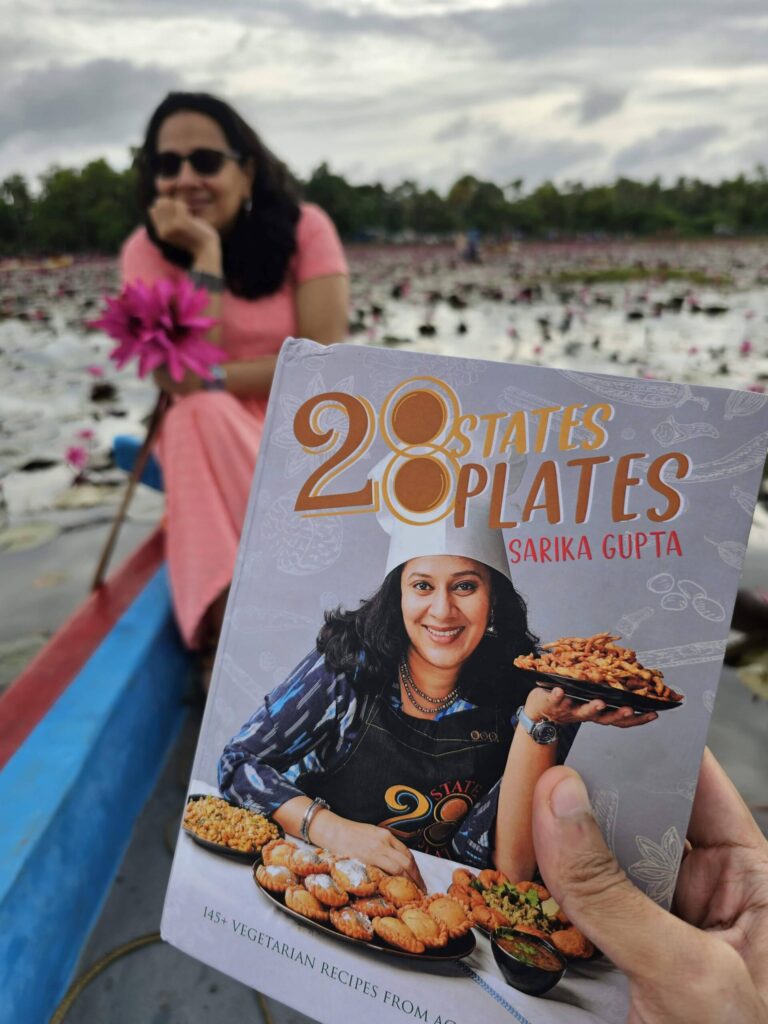
Improvement in Food photography
The quality of my food photographs kept getting better along the way. I have had to take pictures of many dishes multiple times. I have had to cook many of the dishes only for photography— my family has had to eat them over and over again.
These are some sample pictures. If you compare them with the ones that went into the book. There’s a remarkable improvement in the quality. I learnt along the way—saw what food bloggers on Instagram were doing. I was incorporating what I was seeing– without making a rocket science out of the learning. I started taking simple, no frills pictures on my iPhone- not sure if they would go into the book finally. There was a thought in the initial days that— let me develop the recipe and take ‘working’, ‘make-do’ pictures. Along the way, there was an understanding and realization that I would have to take the pictures myself. It would be impractical to hire a photographer to come home for food photography. It would be difficult to match the timing of a photographer with the time when actual cooking is completed. The cost would also escalate. Also, the space and privacy of the family members is compromised in a way.
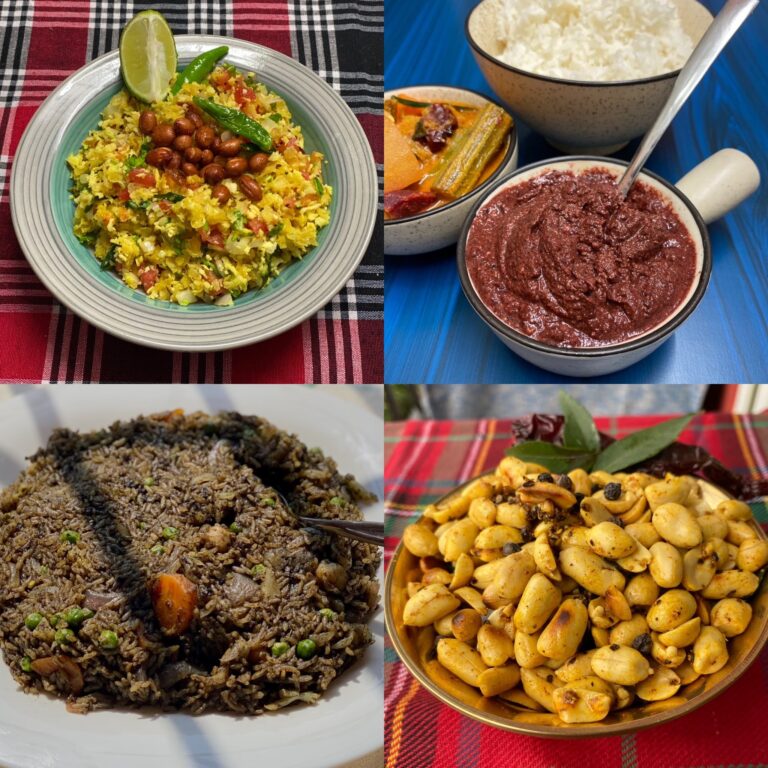
Recipes that haven’t made it to the book
Elaneer Payasam, Khatkhate, Mangalore Banana Buns and Heerakai Dosa are some of the recipes that haven’t made it to the book. Out of these Elaneer Payasam is my favourite.
It is made with the water and flesh from tender coconuts and cooked in coconut milk. It has a very delicate taste and is mildly sweet. This recipe was not included as it is quite difficult to make- especially with fresh coconut milk. I can share the recipe with anyone who is interested in making this dish.
Irani Samosa Recipe – A Crispy Delight from Hyderabad
Irani Samosas are a delectable snack that hails from the rich culinary traditions of Iran. These crispy, flavorful pastries are filled with a savory mixture of chopped onions and aromatics, making them a perfect treat for any occasion.
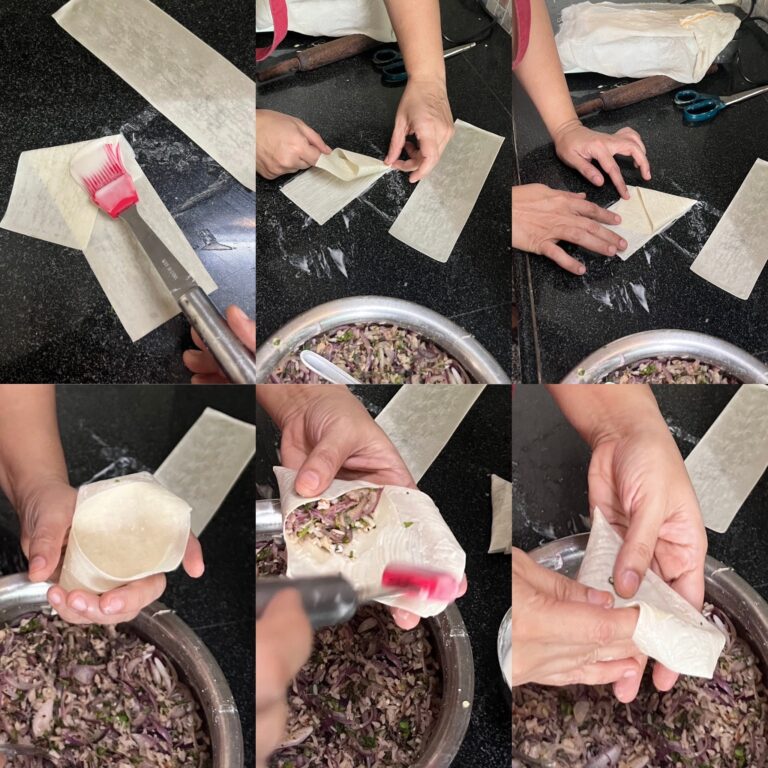
Idhar Kadhi – A Chhattisgarhi Delicacy
Idhar Kadhi is a beloved traditional dish hailing from the heartland of Chhattisgarh, India. This flavorful and comforting recipe features dumplings made from gram flour (besan) simmered in a tangy yogurt-based gravy. It’s a delightful blend of flavors and textures that captures the essence of Chhattisgarhi cuisine. Learn how to make the Idhar for Idhar Kadhi with our step-by-step pictures.
Got questions?
Frequently Asked Questions
Here are some answers to help you learn more about the book, shipping, and how to get started.
The book features over 160 vegetarian and vegan-friendly recipes from all 28 states of India. It includes regional dishes like curries, rice, breads, sweets, snacks, drinks, and pickles — all practical for home cooking.
Absolutely! Each recipe includes step-by-step instructions, simple ingredients, and helpful cooking tips. Whether you’re a beginner or an experienced cook, you’ll find it easy to follow.
You can purchase the book directly on this website or via Amazon, Flipkart.
Yes, we deliver to all major cities and towns in India. Most orders arrive within 4–7 working days. You’ll receive a tracking link once your order is shipped.
Not yet! Currently, only the hardcover print edition is available. A digital version may be released in the future — stay tuned by joining our newsletter.
The book was entirely created by Sarika Gupta — all recipes, photos, and editing were done using her iPhone 13. It’s a 2+ year journey that beautifully combines passion, creativity, and culture.

